What Hi-Fi? Verdict
All the right ingredients are here, but the sonic balance needs work if Kanto is to join the class-leading competition
Pros
- +
Clean and expansive treble
- +
Good attack and solid build
- +
Extensive connectivity options
Cons
- -
Thin through the bass
- -
Sonically a little wearing
Why you can trust What Hi-Fi?
Though hardly a household name in the UK, Canadian speaker firm Kanto Audio makes some very eye-catching speakers. The company’s diminutive, wireless YU5 model even graced the White House sound system during Barack Obama's tenure.
The TUK speakers take their name from Tuktoyaktuk, a remote hamlet in the Arctic Circle, where the Aurora Borealis, or Northern Lights, can often be seen. Kanto claims to have emulated this thrilling visual experience in sound with its latest offering.
Compatibility
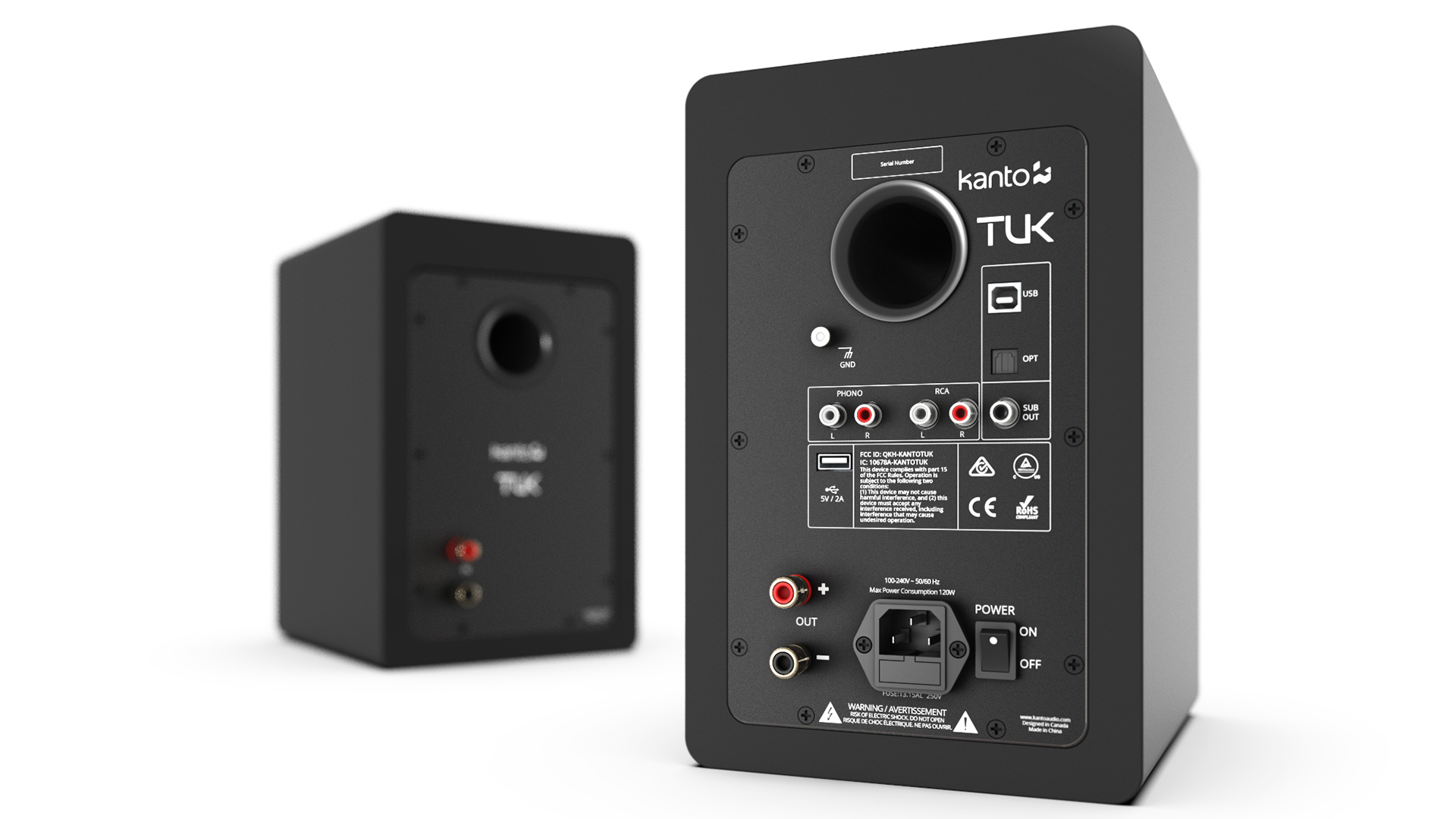
These powered speakers carry many of the features you'd expect of a complete music system, including aptX HD Bluetooth and both digital and analogue inputs. There's even a moving magnet phono stage. In short, you can connect a range of kit, including your phone, tablet, TV and turntable.
There’s also a headphone jack and a dedicated Sub Out RCA connector for integration with a separate subwoofer – Kanto recommends the Kanto sub6 or sub8 – but this isn’t essential. There’s a SUB button on the supplied remote for muting the sub output plus an 80Hz crossover filter that, when activated, sends bass frequencies to a connected subwoofer and lets the TUK focus on the midrange and treble.
Build
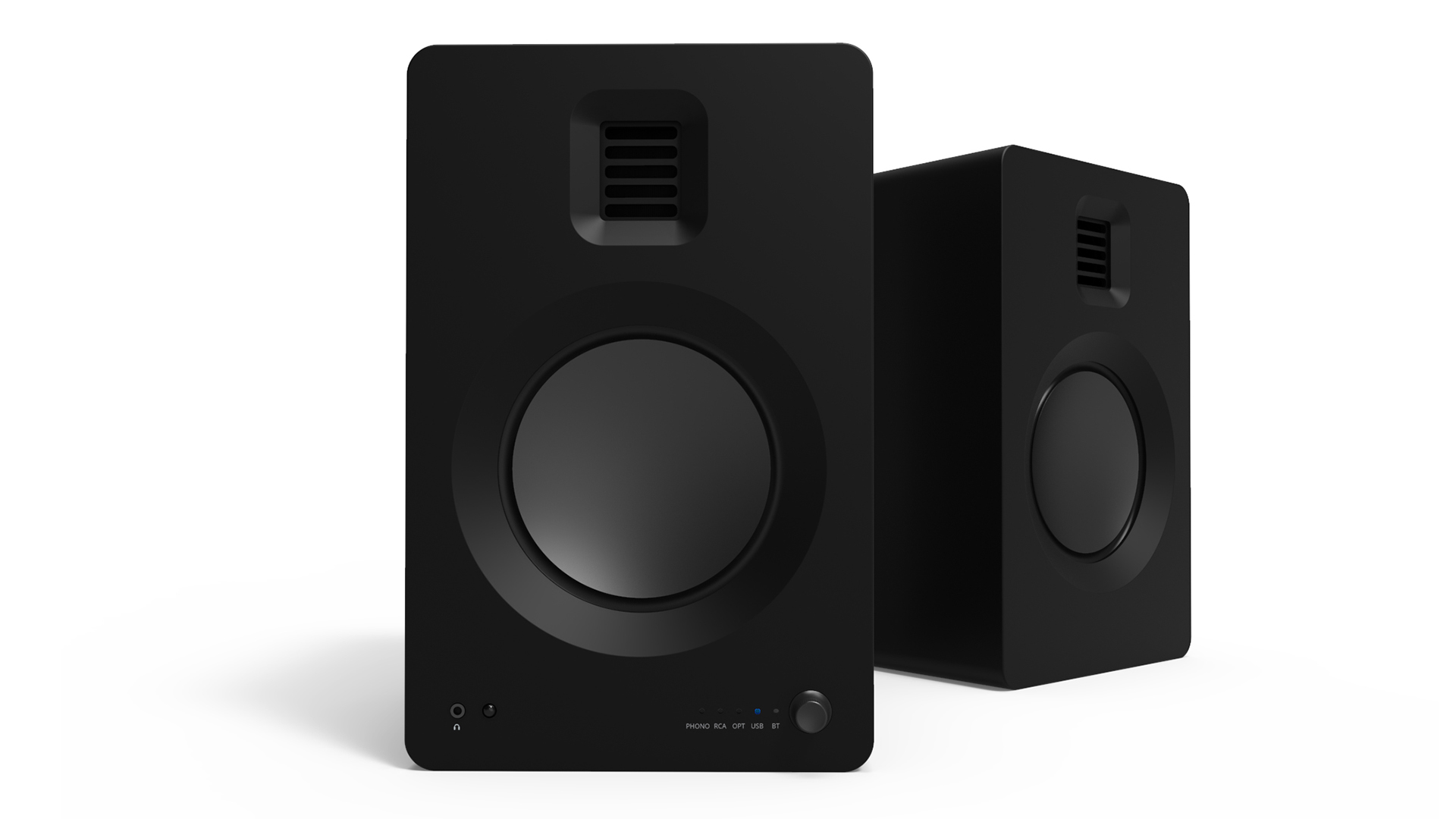
All of this is good news in terms of integration options, but we’re testing the speakers in their own right, and we begin by holding the forward track-skip button on the remote to tell the software that the master speaker is on the right (by default it's set to handle left-channel duties), as that better suits our system arrangement. The blue LED panel on the master speaker moves through the input options to indicate that the desired set-up has been achieved.
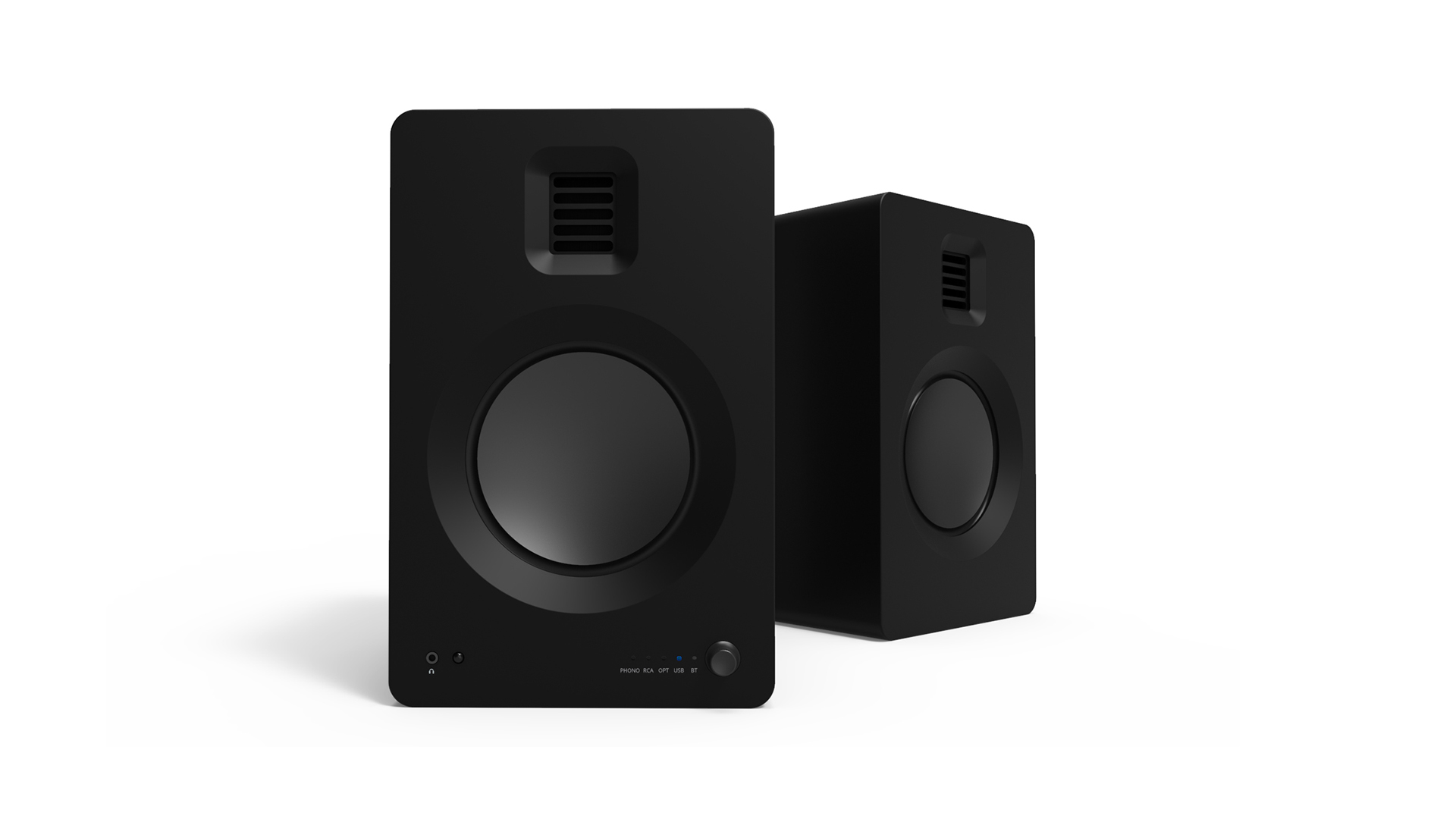
Drivers 28 x 35mm tweeters, 13cm woofer
Power output 65W per channel
Frequency response 50Hz – 20kHz
Bluetooth version 4.2
Dimensions (hwd) 27.6 x 18 x 21.5cm
Weight (active) 5kg
Weight (passive) 4.5kg
The 28x35mm AMT (Air Motion Transformer) tweeter and minimalist, 13cm aluminium woofer give the speakers a clean look, even though it's a little plastic-heavy. The white finish of our model (also available in matte black) is highly likeable.
There is a bass reflex port on the back of each speaker and, while Kanto says the ideal placement is at least 20cm from a rear wall, we find that placing them around 15cm away from the wall of our listening room shows them at their best.
Power is claimed to be 65W per channel. And remember, these are powered speakers, not true active, so the amplification is all housed in the master speaker enclosure, with a cable link between it and its passive partner.
Where an active system features a dedicated amp for each driver, the Kanto approach should be thought of as more akin to a traditional, passive system, where the amp (in this case a Class D design) is simply squirrelled away inside one of the boxes.
A further cable from the master speaker into a power socket completes the fuss-free set-up. Kanto has supplied a USB connector for a computer, but we initially press the TUK’s volume knob to scroll through input options to Bluetooth, pairing easily with our iPad to run the speakers in.
Sound
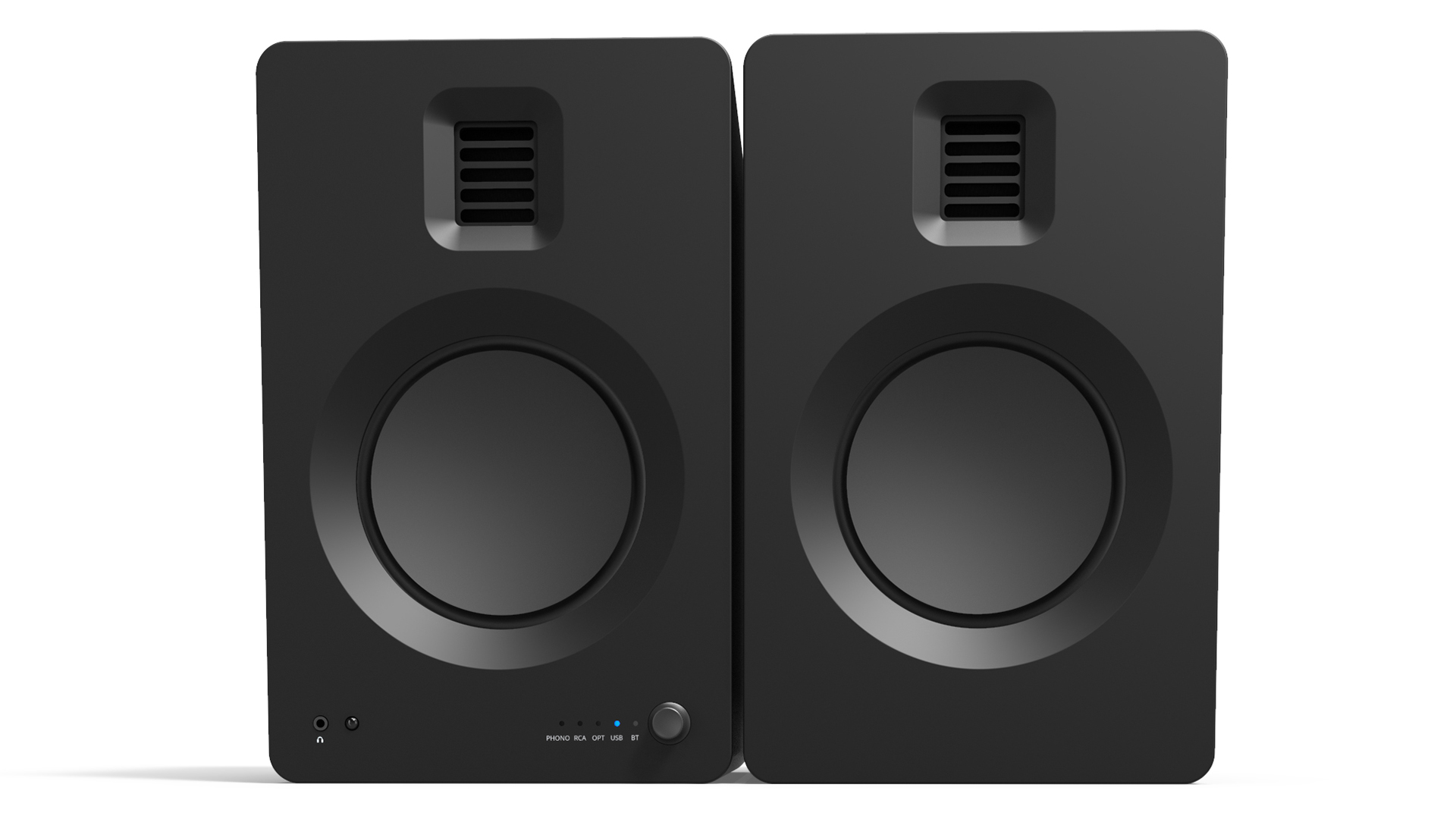
Kicking our listening off with Bluetooth, we cue up Tidal’s Retroactive playlist on our iPad and find the youthful choir at the outset of The Rolling Stones’ You Can’t Always Get What You Want clear, tonally convincing, spacious and with a healthy dollop of detail. As the guitar and solo horn pipe up through the left speaker, Mick Jagger’s voice joins us with a pleasing central placement.
We become aware of the TUK’s energetic ability when it comes to delivering a dynamic performance through the midrange frequencies, too. Jagger’s vocal is upfront but held within a nicely layered mix, from the sparkling treble to the competent mids.
We play Space Oddity and David Bowie’s stirring, sombre lyrics resonate with texture in a refreshing, engaging presentation as the distant countdown to lift-off begins. It’s easy to pick out the more meandering musical passages alongside the raucous percussion, too, with each strand given space to shine.
The weeping electric guitar at the start of Whitesnake’s Now You’re Gone is delivered with both zeal and ease through the finessed high frequencies. When the drums kick in, the TUKs are more than up for the task of keeping the timing secure – but the bass clout is lacking. Checking that all EQ settings are at neutral and that the active crossover (which could send those frequencies to a subwoofer) is disabled, we realise that it is a genuine issue.
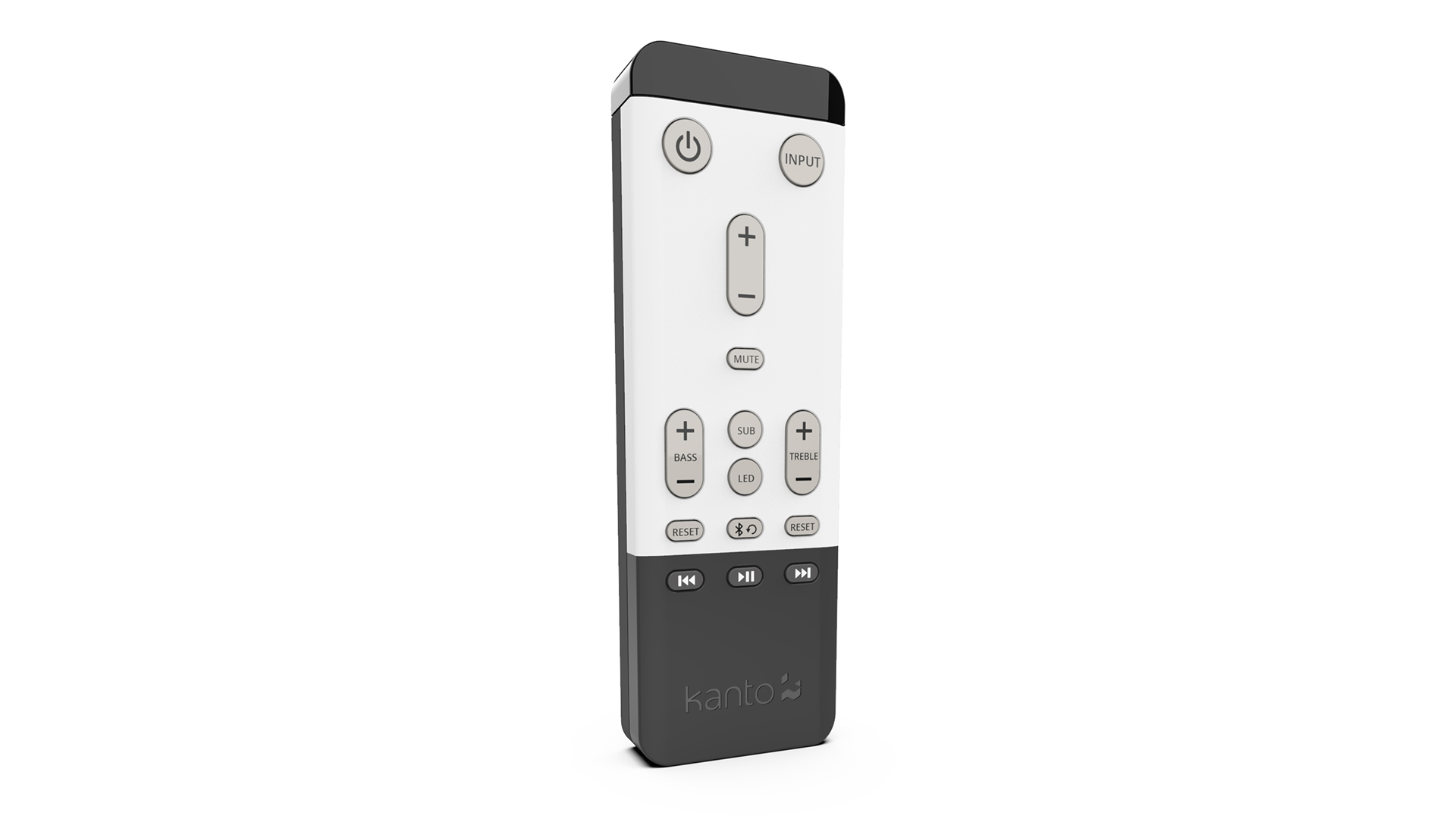
While the TUKs are presenting a clean and agile listen, it’s also thin and overly forward – and even adjusting the EQ settings and moving them closer to the rear wall of our listening room doesn’t fully balance things out.
We hook up our laptop with the supplied cable and select Hans Zimmer’s Main Theme from The Dark Knight Rises – a FLAC file from the hi-res music on our server. Strings are agile, identifiable in their groupings and feel altogether part of a human orchestra. However, the overall balance isn’t quite right; the bass registers are reticent and not nearly as stirring as they should be while the midrange lacks projection and solidity.
We locate Joni Mitchell’s River, another FLAC file, but this time we listen through Grado’s SR125 headphones plugged into the master speaker. It’s an expansive mix where Mitchell’s vocal seems as close to our ear as she intended, but we’re missing her vocal strength through the lower registers.
Verdict
For those hankering after a set of plug-and-play powered speakers offering connections to any external source your heart desires, the Kanto TUK speakers present a fully-featured and well-made proposition.
All the right ingredients are there, but the sonic balance needs work. The bass is thin compared to the rest of the mix, and listening actually becomes wearing over time.
The Kanto TUK speakers certainly look the part, and they offer a banquet of options for setting-up. And while we’re sure that seeing the Northern Lights is a five-star experience, the TUKs cannot replicate that with a thrilling, five-star listen.
SCORES
- Sound 3
- Compatibility 4
- Build 4
MORE:
Read our Dali Zensor 5 AX review
What Hi-Fi?, founded in 1976, is the world's leading independent guide to buying and owning hi-fi and home entertainment products. Our comprehensive tests help you buy the very best for your money, with our advice sections giving you step-by-step information on how to get even more from your music and movies. Everything is tested by our dedicated team of in-house reviewers in our custom-built test rooms in London, Reading and Bath. Our coveted five-star rating and Awards are recognised all over the world as the ultimate seal of approval, so you can buy with absolute confidence.
-
Moree Spingato I have these in my living room. Gorgeous speakers, especially in white. Perfect amount of tight bass, and the clarity + mids are fabulous. No more 'audiophile' wires and gadgetry needed. The days of wires etc are done. From Tidal or even Spotify's hifi Premium option, with aptX bluetooth these rock across all music genres,Reply -
neby_nebs I feel like a 3 for sound is suuuuper undertaking these speakers.Reply
if you position them correctly on the desk with it ear level and slightly tilted in, you will be extremely happy with the sound stage as well as crip fidelity the tweeters are able to pull out. -
Shade6453 I bought these based on the good reviews. My thoughts....Reply
they are Ok. Not spectacular and here is why.
they get a 5 out of 5 for convenience. Bluetooth, built in amp, plug right into the tv, turntable, cd player, computer, etc all at once. That is awesome.
sound - meh. This is where it lacks. I find no matter what i listen to, be it digital or vinyl, it's all sounding the same way. 2 out of 5 and that is being liberal.
all in all, they are convenient. Nothing more. -
Dar Hi, just to add my experience, I bought a pair of Kanto Tuk speakers from amazon.fr, there was a loud very high frequency hum coming from the powered speaker, one of the woofers was off center by a good few mm and there was paint chips around the input lights, I contacted Kanto support for help with the hum, they were very hard to deal with and spent a week of emails back and forth only for them to tell me they wouldn't cover any warranty because amazon.fr wasn't a kanto reseller (even though they have an official shop front?) and I had paid a bit less than the RRP so they consider the speakers used even though they even had the invoice for the "new" speakers because thy consider no retailers to ever sell any of there products under their RRP!?Reply
So anyone who buys one of there speaker from what seems to be most retailers (European ones anyway), or anyone who pays any less than full RRP have according to Kanto, NO MANAFACTURES WARRENTY! That's a lot of people!
I was lucky I got to find this out before my amazon return window closed.
In all it was a terrible experience from a company that has poor quality control and terrible costumer service, I sent mine back for a refund and wished I never bought em. -
rexos Reply
Completely opposite customer service experience for me.Dar said:Hi, just to add my experience, I bought a pair of Kanto Tuk speakers from amazon.fr, there was a loud very high frequency hum coming from the powered speaker, one of the woofers was off center by a good few mm and there was paint chips around the input lights, I contacted Kanto support for help with the hum, they were very hard to deal with and spent a week of emails back and forth only for them to tell me they wouldn't cover any warranty because amazon.fr wasn't a kanto reseller (even though they have an official shop front?) and I had paid a bit less than the RRP so they consider the speakers used even though they even had the invoice for the "new" speakers because thy consider no retailers to ever sell any of there products under their RRP!?
So anyone who buys one of there speaker from what seems to be most retailers (European ones anyway), or anyone who pays any less than full RRP have according to Kanto, NO MANAFACTURES WARRENTY! That's a lot of people!
I was lucky I got to find this out before my amazon return window closed.
In all it was a terrible experience from a company that has poor quality control and terrible costumer service, I sent mine back for a refund and wished I never bought em.
I had the exact same high frequency hum with my pair bought from an online retailer, and it was obviously a manufacturing defect.
I contacted Kanto, which replied to me promptly, and after checking the issue by means of me sending a video, they offered to send a brand new replacement pair without even needing me to return my pair (I did need to render my pair unusable by cutting the driver and send them a photo). It was dispatched almost immediately after and i received it in about a week.
Probably the best customer experience i have ever had, and totally unexpected how smooth it went.

